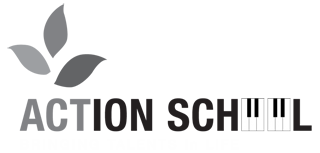Studio Info > FAQ
FAQ
What is unique about The Piano Studio of Janna Gainulin?
Have been specializing on the beginning and intermediate levels students of all ages, as well as students with specific learning disabilities (SLD), I teach them not only how to express themselves through artistic performance of various styles of music, but also how to make their own music through improvisation and composition. In addition, students receive a comprehensive musical education through theory/aural training, music history and literature lessons, and performing for peers during monthly Studio Classes and public events. These skills are all important for developing well-rounded, knowledgable musicians.
How much am I required to practice?
I do encourage students to practice daily in order to ensure progress and be prepared for every lesson. During lessons, I notate weekly goals and practice suggestions in the student's assignment notebook. We also spend time discussing ways to efficiently practice specific areas of their music.
Why do I need an acoustic piano? And how often do I need to get it tuned?
Despite technological advancements in recent years, acoustic pianos still hold their value better than digital pianos and keyboards, so they are usually quite a worthwhile investment for families even when buying used. Acoustic pianos should be tuned twice a year by a piano technician (find one at ptg.org).
Do I need to pay for books and materials?
The Annual Registration Fee Options:
$10.00 (covers the expenses related to administration & semester recital), or
$35 (applied to the costs of bugle students books, supplemental materials, as well as maintaining the studio's lending library),
are non-refundable fees which reserves the student's place in the studio. The registration fee must be paid together with the tuition.
What method books do I use with young students?
There are a lot of piano method books out in the market today. There are some which have been tried and tested through the years, and new ones, like, Alfred', James Bastien', Hal Leonard', Frances Clark', Nancy and Radall Faber', John Thompson', David Glover', Robert Pace', Piano Pronto (Jennifer Eklund); the Russian school of piano playing, like Alexander Nikolaev', Faina Bryanskaya', Irina Gorin', etc. I choose the certain method for a particular student after an interview with him/her and family.
What elements of traditional harmony I usually teach to beginning and intermediate levels students?
In summary, here are the basics of harmony that every pianist and musician should know: Intervals, Scales: major and minor ( three forms: natural, harmonic, melodic ), Triads: major, minor, diminished, augmented (in all inversions), Seventh chords: dominant seventh and its resolutions; other major, minor, and diminished seventh chords, Key signatures: the circle of keys ( circle of fifths), Cadences: I- V-I, I-IV-V-I, I-IV-I6/4-V-I, I-VI-IV-II6-I6/4-V7-I (in all keys), Modulations: In a progressive order, to closely related keys at first (C to G, C to F, C to A, etc.) then to more distant ones.
What events and opportunities does the studio provide for students?
The studio schedules a number of exciting events for private students and their parents each year! All of these events are provided at no extra cost, with the exception of the optional theory examinations / performance evaluations.
Why is the annual tuition divided into 12 equal monthly payments?
Piano teaching is my career and livelihood! Setting an annual tuition rate allows me to have a regular income all year long. It also makes it easier for students/parents to budget since they know exactly what to expect each month. The annual tuition rate covers much more than just "x" number of private lessons each year - it also includes group lessons, piano maintenance, recital hall expenses, professional development for the teacher, and more. All these things allow me to provide the student with the best musical education I can offer.
Have been specializing on the beginning and intermediate levels students of all ages, as well as students with specific learning disabilities (SLD), I teach them not only how to express themselves through artistic performance of various styles of music, but also how to make their own music through improvisation and composition. In addition, students receive a comprehensive musical education through theory/aural training, music history and literature lessons, and performing for peers during monthly Studio Classes and public events. These skills are all important for developing well-rounded, knowledgable musicians.
How much am I required to practice?
I do encourage students to practice daily in order to ensure progress and be prepared for every lesson. During lessons, I notate weekly goals and practice suggestions in the student's assignment notebook. We also spend time discussing ways to efficiently practice specific areas of their music.
Why do I need an acoustic piano? And how often do I need to get it tuned?
Despite technological advancements in recent years, acoustic pianos still hold their value better than digital pianos and keyboards, so they are usually quite a worthwhile investment for families even when buying used. Acoustic pianos should be tuned twice a year by a piano technician (find one at ptg.org).
Do I need to pay for books and materials?
The Annual Registration Fee Options:
$10.00 (covers the expenses related to administration & semester recital), or
$35 (applied to the costs of bugle students books, supplemental materials, as well as maintaining the studio's lending library),
are non-refundable fees which reserves the student's place in the studio. The registration fee must be paid together with the tuition.
What method books do I use with young students?
There are a lot of piano method books out in the market today. There are some which have been tried and tested through the years, and new ones, like, Alfred', James Bastien', Hal Leonard', Frances Clark', Nancy and Radall Faber', John Thompson', David Glover', Robert Pace', Piano Pronto (Jennifer Eklund); the Russian school of piano playing, like Alexander Nikolaev', Faina Bryanskaya', Irina Gorin', etc. I choose the certain method for a particular student after an interview with him/her and family.
What elements of traditional harmony I usually teach to beginning and intermediate levels students?
In summary, here are the basics of harmony that every pianist and musician should know: Intervals, Scales: major and minor ( three forms: natural, harmonic, melodic ), Triads: major, minor, diminished, augmented (in all inversions), Seventh chords: dominant seventh and its resolutions; other major, minor, and diminished seventh chords, Key signatures: the circle of keys ( circle of fifths), Cadences: I- V-I, I-IV-V-I, I-IV-I6/4-V-I, I-VI-IV-II6-I6/4-V7-I (in all keys), Modulations: In a progressive order, to closely related keys at first (C to G, C to F, C to A, etc.) then to more distant ones.
What events and opportunities does the studio provide for students?
The studio schedules a number of exciting events for private students and their parents each year! All of these events are provided at no extra cost, with the exception of the optional theory examinations / performance evaluations.
- Studio Classes | Monthly group classes called "Studio Class" are provided for private students in order to promote student camaraderie and to reinforce concepts taught during private lessons. Most group lessons include a theory segment, history segment, and a performance segment. With young private students, music & movement activities are also frequently included. With adult private students, there is a focus on piano literature history and repertoire performance in a relaxed environment.
- Studio Recitals | Performing in a formal recital setting is an exciting opportunity for students to showcase their hard work and improvement over the year in the presence of their family and friends. This year's recital location is TBD.
- Studio Outings | Throughout the year, studio outings are organized, including trips to hear public solo piano performances and ensemble concerts such as those given by Bowling Green State University's piano majors and orchestras. These outings are provided at no additional cost to the student/parents. Parents are encouraged to accompany as drivers/chaperones and enjoy the music.
- Examinations | Students are welcome to participate in theory examinations and/or performance evaluations through Illinois's music program of choice, "The Achievement Program" sponsored by the Royal Conservatory and Carnegie Hall. These opportunities usually require entry fees. Please contact me for further information.
- Summer Music Camps | During the summer months, three week-long camps are offered with a variety of topics/themes to choose from. Participation is not limited to Joy's private students, so invite your friends - no matter which instrument they play!
Why is the annual tuition divided into 12 equal monthly payments?
Piano teaching is my career and livelihood! Setting an annual tuition rate allows me to have a regular income all year long. It also makes it easier for students/parents to budget since they know exactly what to expect each month. The annual tuition rate covers much more than just "x" number of private lessons each year - it also includes group lessons, piano maintenance, recital hall expenses, professional development for the teacher, and more. All these things allow me to provide the student with the best musical education I can offer.


